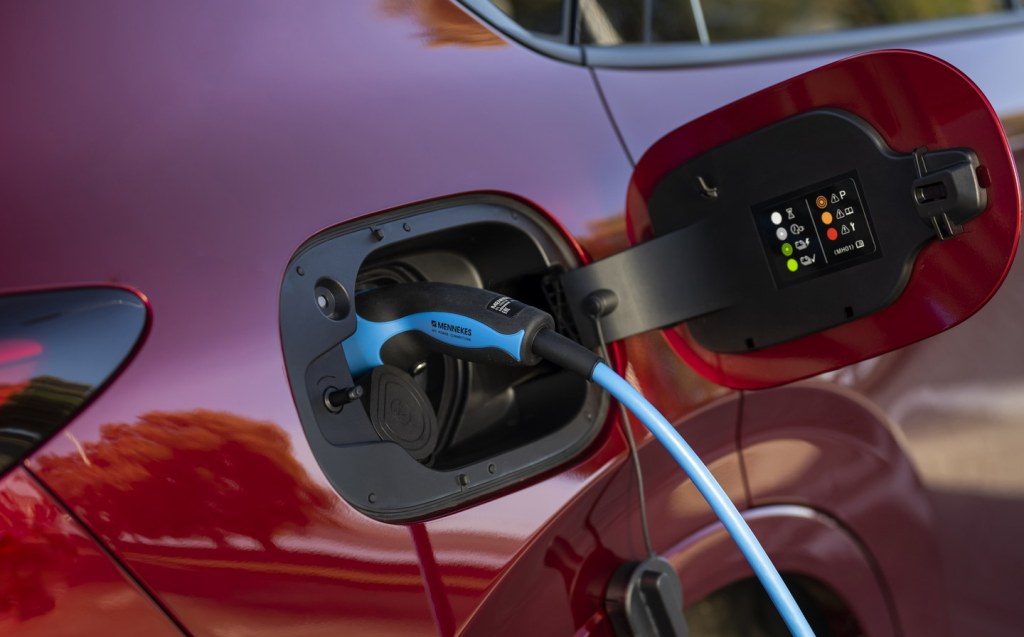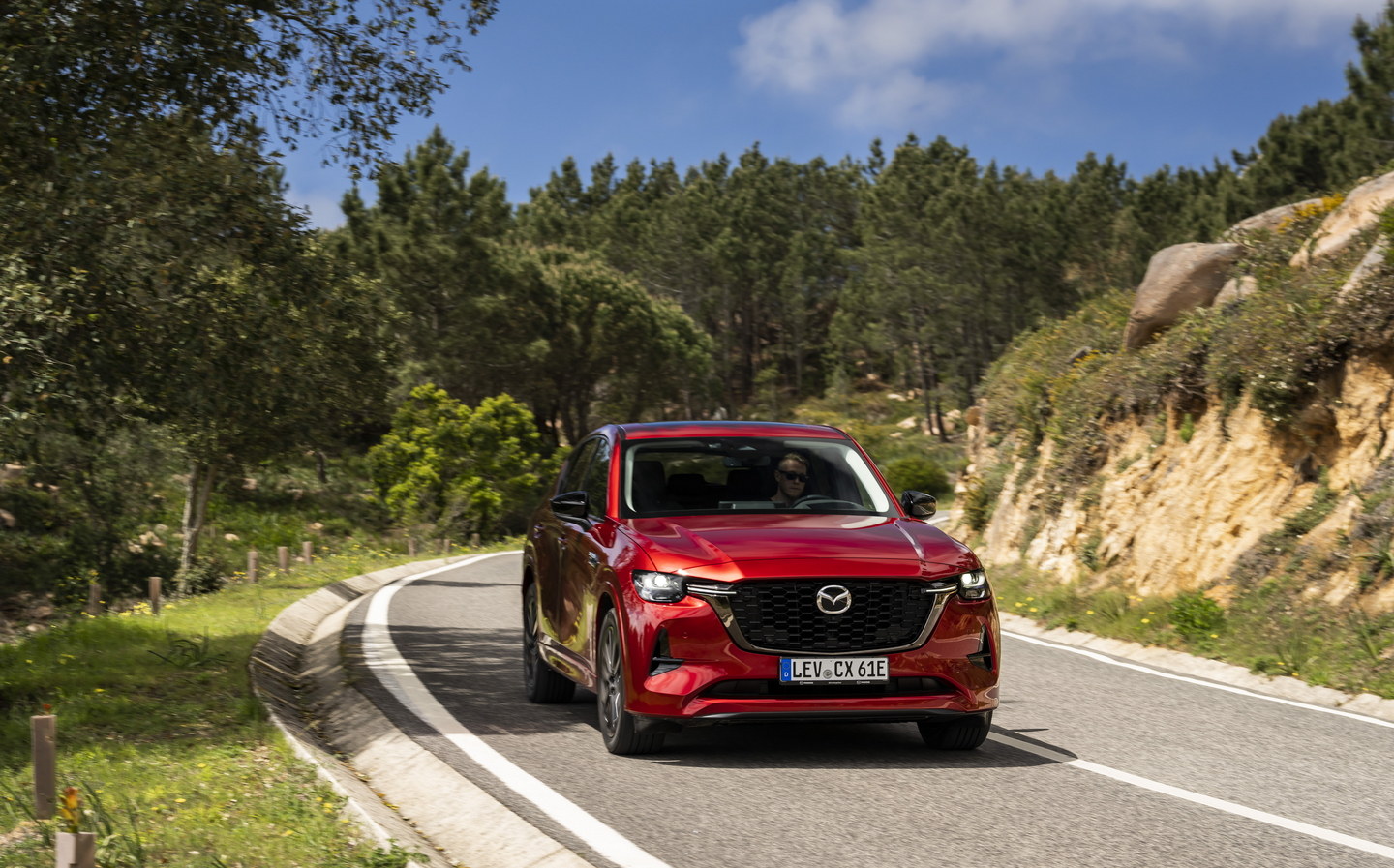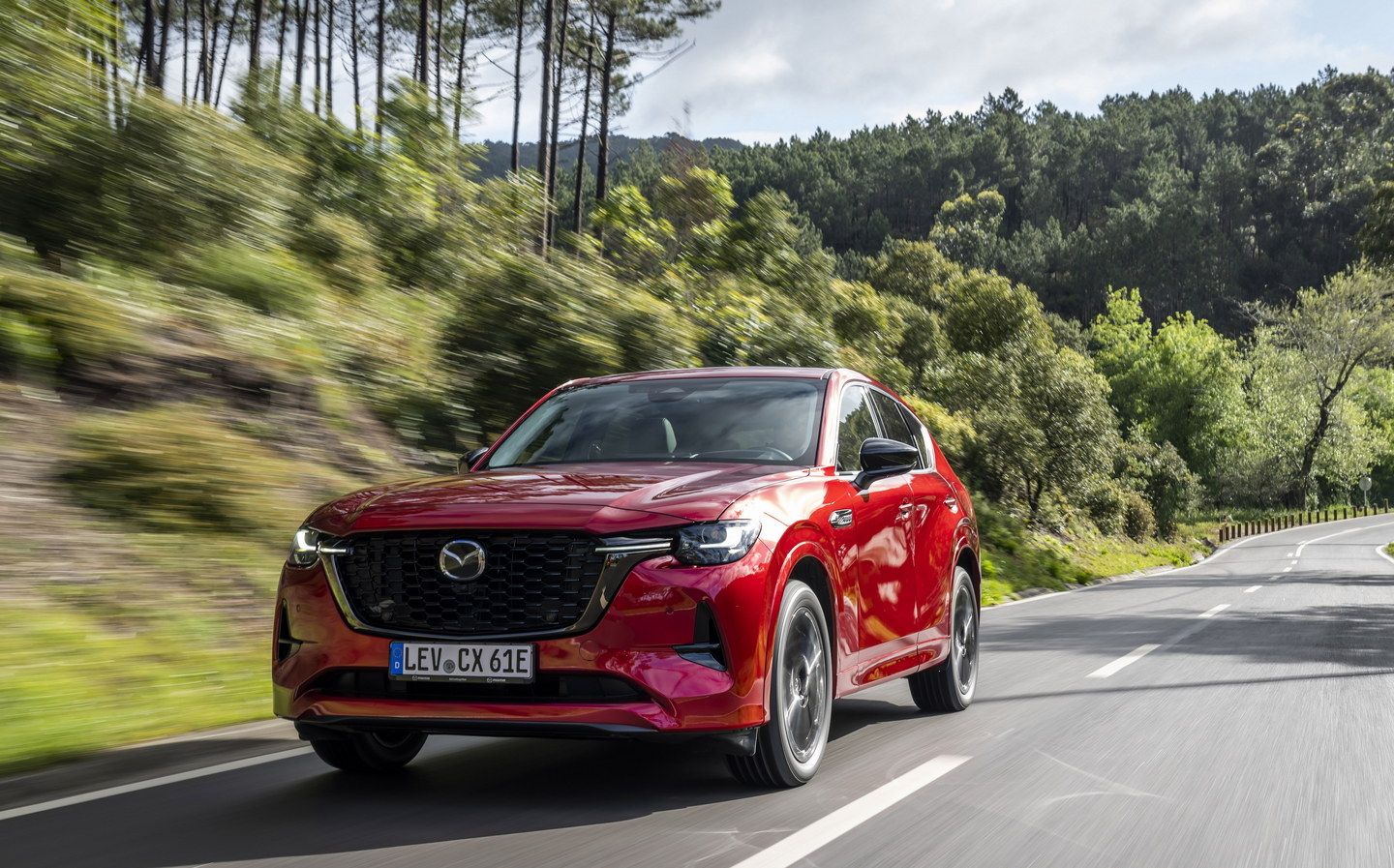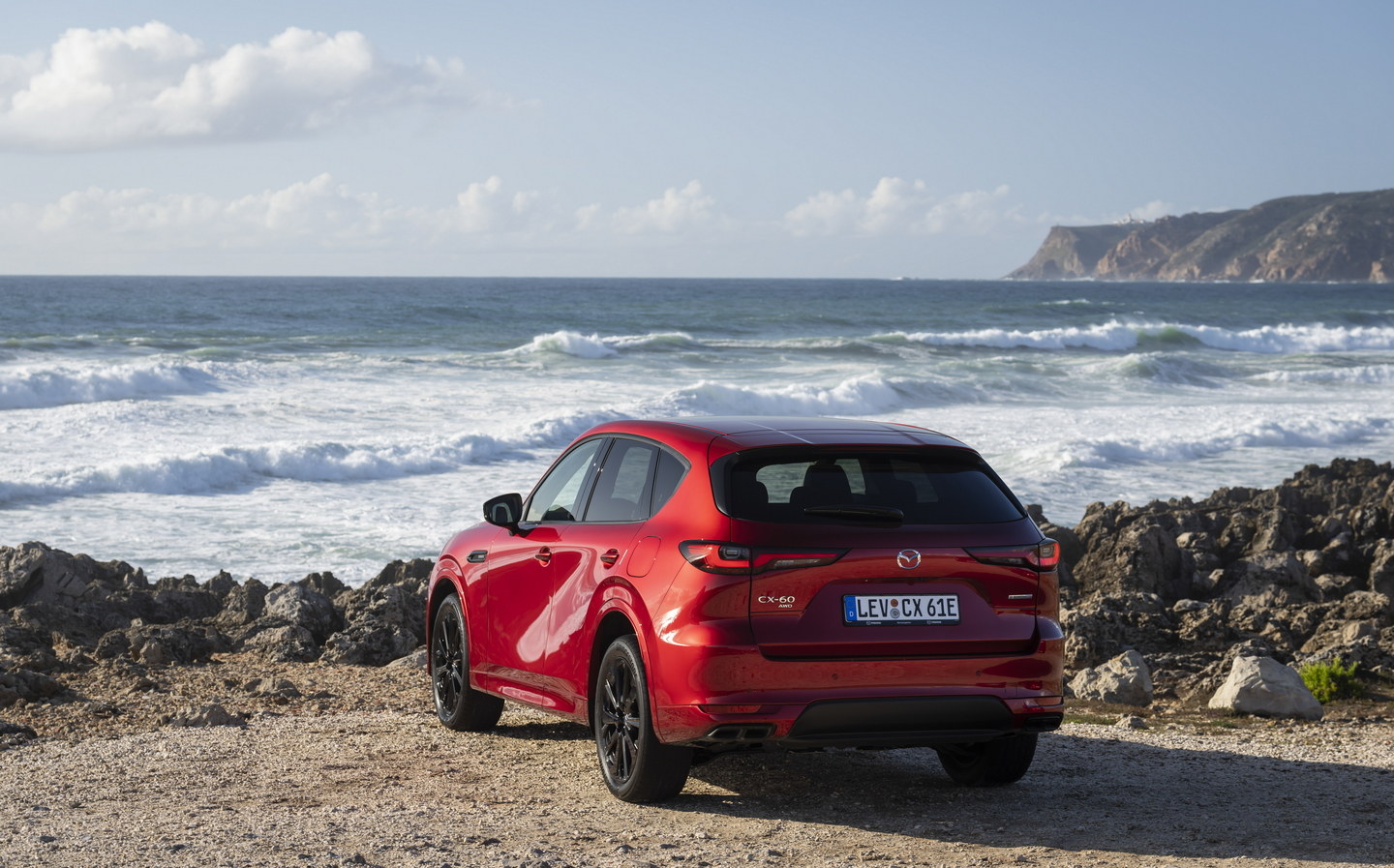Mazda CX-60 2022 review: A statement of premium intent
Not only big in Japan
Mazda is probably most famous for producing the best-selling two-seat convertible sports car in history, but it is generally one of the car world’s outliers when it comes to following convention. Odd then that it is pinning such high hopes on the the new Mazda CX-60.
The company’s new range-topping model is the most powerful Mazda to date. However, this isn’t a sexy rotary-engined sports car; it’s a new plug-in hybrid SUV, which doesn’t sound terrifically exciting.
But what the CX-60 represents is interesting. For starters it makes the debut of all-new underpinnings that will be used for other rear-wheel-drive Mazdas in the future, and it’s capable of harnessing a variety of powertrain options, including battery-electric models.
Mazda isn’t giving up on combustion yet, though, and is one of the few companies developing new diesel and petrol engines.
It is also setting its target on the premium end of the market, and hopes the CX-60 could steal some sales away from Audi, BMW and Mercedes buyers who want something a little different to the norm.

Exterior design and rivals
Mazda’s “Kodo” design philosophy evolves in the CX-60, although the shape isn’t as curvaceous as the slightly smaller CX-5. A side-by-side comparison reveals that the CX-60 is 170mm longer and 45mm wider and to the naked eye it looks to be a more substantial vehicle.
Only the Exclusive-Line CX-60 gets black mouldings around the wheel arches and sills. This gives it a slightly more rugged look, although a reduction in ground clearance because of the floor-mounted battery means it’s not going to compete with tougher SUVs off-road. In the Homura and Takumi versions, the sills and arches are painted to match the bodywork.

A total of eight paint colours are available, but Arctic White is the only one that is a no-cost option. Deep Crystal Blue, Jet Black, Platinum Quartz and Sonic Silver (surely it should be blue?) cost £650, while Machine Grey and Rhodium White are £750 options. Soul Red Crystal, arguably the most striking colour, will set you back £900.
From Mazda’s perspective, its main rivals are the Audi Q5, BMW X3 and Mercedes-Benz GLC, all good cars in their own right and firmly established premium SUVs. But Mazda isn’t the only non-German marque that has been pulling up its socks lately, and it faces stiff competition from the Ford Kuga and Kia Sportage, too, both of which also can be had with plug-in hybrid power.
Interior and practicality

The interior is one of Mazda’s best, striking a good balance between modernity and traditional premium quality. Particular attention has been paid to materials that include natural wood grains and a traditional Japanese stitching technique called Kakenui. How cultured.
Aesthetics and materials aside, it all appears to be assembled to a very high quality.
In front of the driver is a digital instrument display that presents all relevant data in a clear and uncluttered way and is supported by a colour head-up display that places the most important driving information in your line of sight.
Sitting atop the centre console is a 12.3in touchscreen display, fast becoming an industry standard size. Mazda’s native infotainment system is intuitive and straightforward to use, and wireless connectivity for Android Auto and Apple CarPlay is standard.
Although there is a touchscreen, Mazda retains its rotary controller for navigating the menu system. A wide band of physical buttons for the secondary functions, such as climate controls and heated seats, are welcome, too.

A wide, flat centre console provides space for two cupholders, the optional wireless phone charging pad and a double armrest with further storage underneath.
Whereas many cars are moving to smaller switch controllers for selecting drive, park and reverse for their automatic transmissions, Mazda sticks with a short, chunky selector that has a very solid action to it.
There is a good sense of space in the front, which continues into the rear seats. Helping access to the back are rear doors that open to almost 90 degrees, which will be a boon to parents with smaller kids. Both outer rear seats contain Isofix mountings, and the middle seat is a good width, too.
By deciding that the CX-60 would be a PHEV from the outset, Mazda’s engineers could optimise the battery packaging to give it more boot space than most of its competitors. With 570 litres of volume, the CX-60 comfortably trumps most other PHEVs.
An electrically operated tailgate is standard, and the wide aperture makes loading bulkier items less trouble. The rear seats have a 40/20/40 split and can be dropped forward via levers in the boot.
Technology and safety

The expected safety features are standard on the CX-60, such as automatic emergency braking that includes a ‘turn across’ element to mitigate frontal collisions.
Blind spot monitoring acts as an extra set of eyes on the motorway, while ‘rear cross traffic’ helps when reversing out from parking spaces, and cruise control is also standard. The advanced adaptive cruise control can handle steering, braking and acceleration in slow-moving traffic and comes as part of a £1,100 driver assistance pack.
One interesting feature allows the driver to input their height and the CX-60 will automatically adjust the seat and steering wheel to what it deems the optimum position. It was remarkably accurate when we tried it.
Should you need to make a few minor tweaks, you can save them to a driver profile by scanning your face with the onboard camera. It’s mounted on the central touchscreen and each time you (or another driver) get into the car, it will automatically set itself up to the chosen position. Quite nifty if you share the vehicle with others and always have to adjust the seat.
That camera also functions as a driver monitoring system that can detect if the driver is distracted or tired at the wheel.
Performance, power output and acceleration

The CX-60 will initially only be available as a plug-in hybrid. A 17.8kWh battery is sufficient to cover up to 39 miles on electric power, according to Mazda. Its 129kW (173bhp) electric motor sits between a 2.5-litre four-cylinder petrol engine and Mazda’s newly developed eight-speed automatic gearbox. Power is sent mostly to the rear wheels, though the all-wheel-drive transmission can distribute power to wherever the most grip is found.
Most owners will want to spend much of their time using only the electric motor to realise the cost benefits of the CX-60. Occasional odd noises aside, the electric motor is smooth in delivering its power and when the combustion engine is needed, the transition between the two goes almost unnoticed.
When working flat-out in harmony, the engine and motor produce up 323bhp and an ample 368lb ft of torque, enough for 0-62mph in 5.8 seconds. In reality, it doesn’t feel as brisk as the figures indicate it might, and the four-cylinder engine is uninspiring. It’s more of a drone you might expect from an appliance and seems strained at higher engine speeds.
One aspect where the CX-60 is strong is towing, as it can pull up to 2,500kg of a braked load.

Even though plug-in power has created Mazda’s most potent model to date, it doesn’t encourage you to explore its dynamic abilities. Instead, it’s best to adopt a slower approach to driving the CX-60 and enjoy the benefits of a healthy battery range and potentially low running costs.
Ride and handling
We’ll have to preface this section by saying that our drive in the CX-60 was in a pre-production vehicle, meaning it isn’t quite the finished product that buyers will experience. That may buy Mazda some time to work on improvements, as we found the electric powertrain made some undesirable noises and gear changes in the lower ratios weren’t as smooth would be expected in this sector.

Somewhat unsurprisingly, for a car wearing 20in alloy wheels (meaning not a huge amount of depth in the rubber), the ride quality was firm, delivering a mixed performance at slower speeds. Bumps and other road imperfections are more pronounced than they ought to be, perhaps not helped by a kerb weight of just over two tons.
Things do get better in the ride and handling stakes when it gains a bit more speed. The double-wishbone front and multilink rear suspension feels better suited to more free-flowing conditions, remaining impressively level in corners.
A nicely weighted steering setup does a good job of telegraphing to the driver what the front wheels are doing, though good steering shouldn’t come as a surprise from the company that gives us the MX-5.
There’s little road or wind noise, which adds to the more relaxing driving experience the CX-60 provides.
Pricing and on-sale date
With a starting price of £43,950, Mazda is already off to a good start if it wants to compete against premium German brands. Orders are already being taken, although it will be September before cars begin to appear in dealers.
The Exclusive Line model gets a decent amount of standard equipment, including leather upholstery, heated front seats and a heated steering wheel, cruise control and other driver assistance systems. The 18in wheels are the smallest available on the car and could help the overall ride comfort.
For a sportier look, the Homura specification (from £46,700) gains 20in black wheels, a darker grille surround and black door mirrors. There’s also an upgraded Bose surround sound system, ventilated front seats and heated rear seats.
The £48,050 Takumi is the range-topper, featuring machined 20in alloy wheels, chrome window surrounds and a more luxurious interior with white Nappa leather, white Maple wood inserts and a dashboard with cloth stitching.
Verdict: Mazda CX-60 review

The CX-60 is worthy of flagship status and showcases how Mazda is on top of its game regarding design and interior quality.
Standard equipment levels are generous and, perhaps most importantly, it has a longer battery range than many of the other PHEVs it competes against.
Mazda’s lofty aspirations to become a premium player may be premature but it’s an alternative worthy of consideration.
Related articles
- After reading this review of the 2022 Mazda CX-60, you might want to see our review of the Maserati Grecale
- Rather go electric? Here are the top 10 longest-range electric cars
- And don’t miss our review of the divisive BMW iX
Latest articles
- Seven great automotive events to visit this summer, from F1 to art and champagne

- Watch new Porsche 911 GT3 smash Nürburgring record for manual cars

- Skoda Elroq 2025 review: Czech carmaker can’t seem to miss with its electric family cars

- Five best electric cars to buy in 2025

- Should I buy a diesel car in 2025?








































